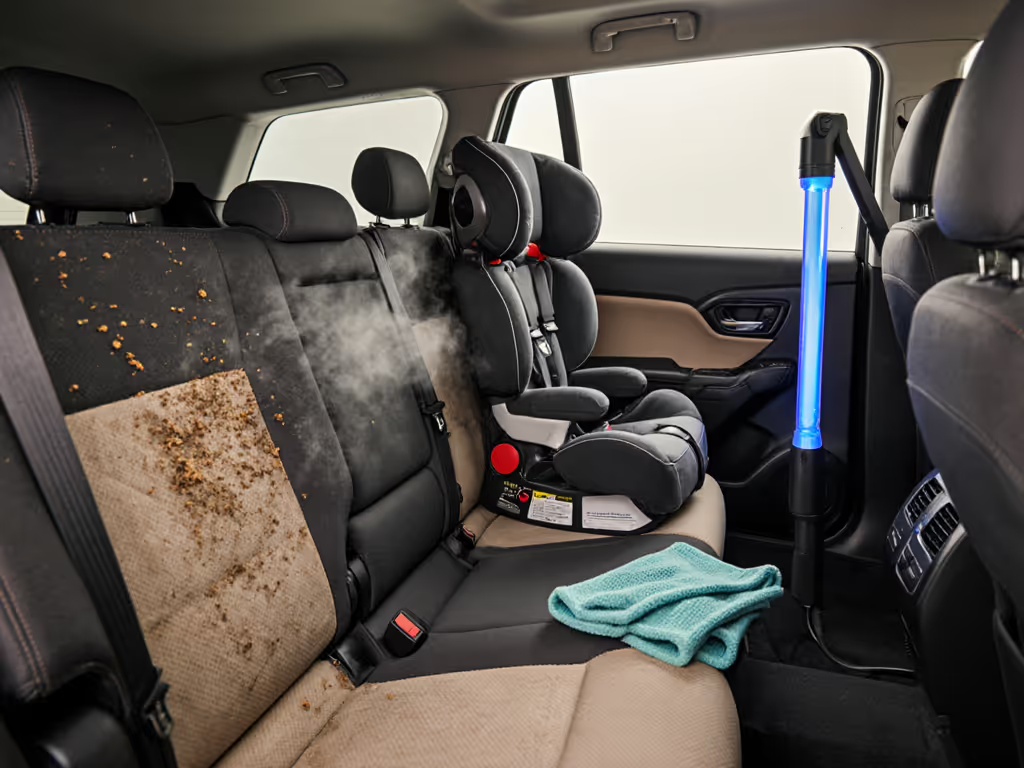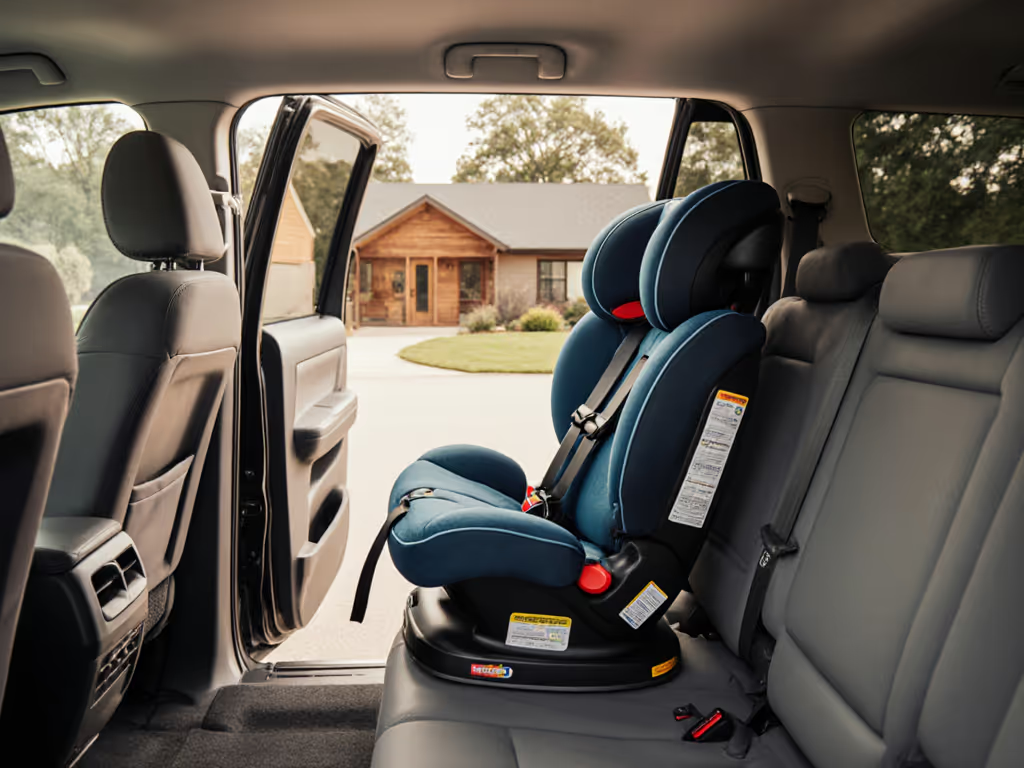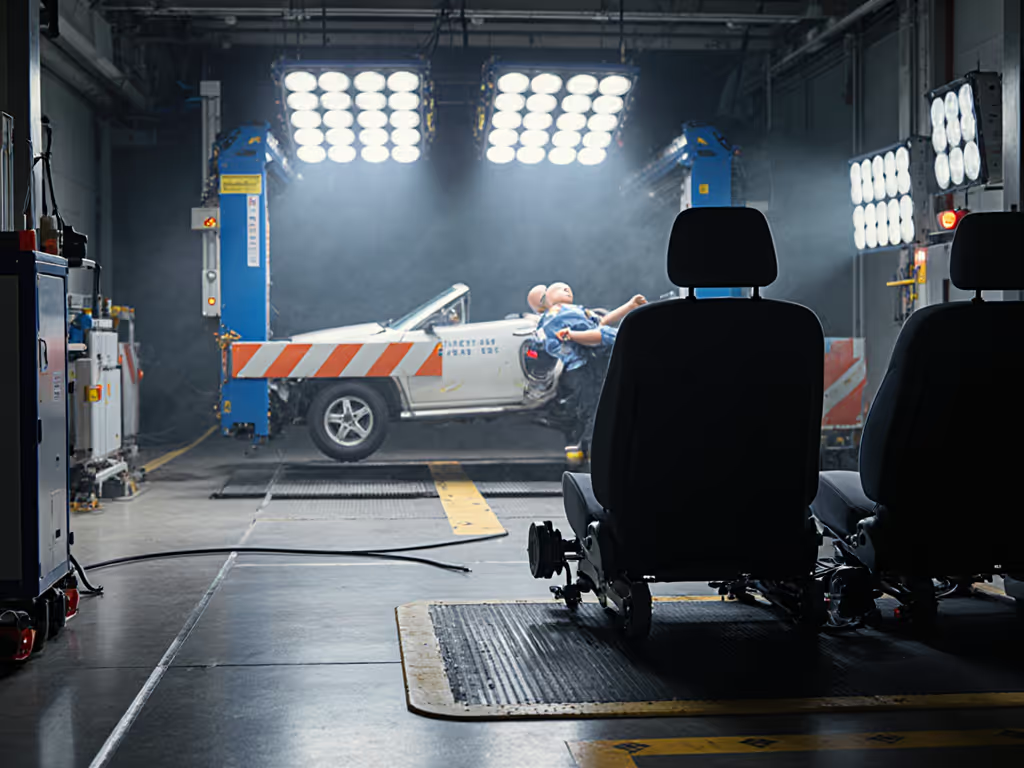
360 Car Seat Rotation: Safety Mechanics Explained
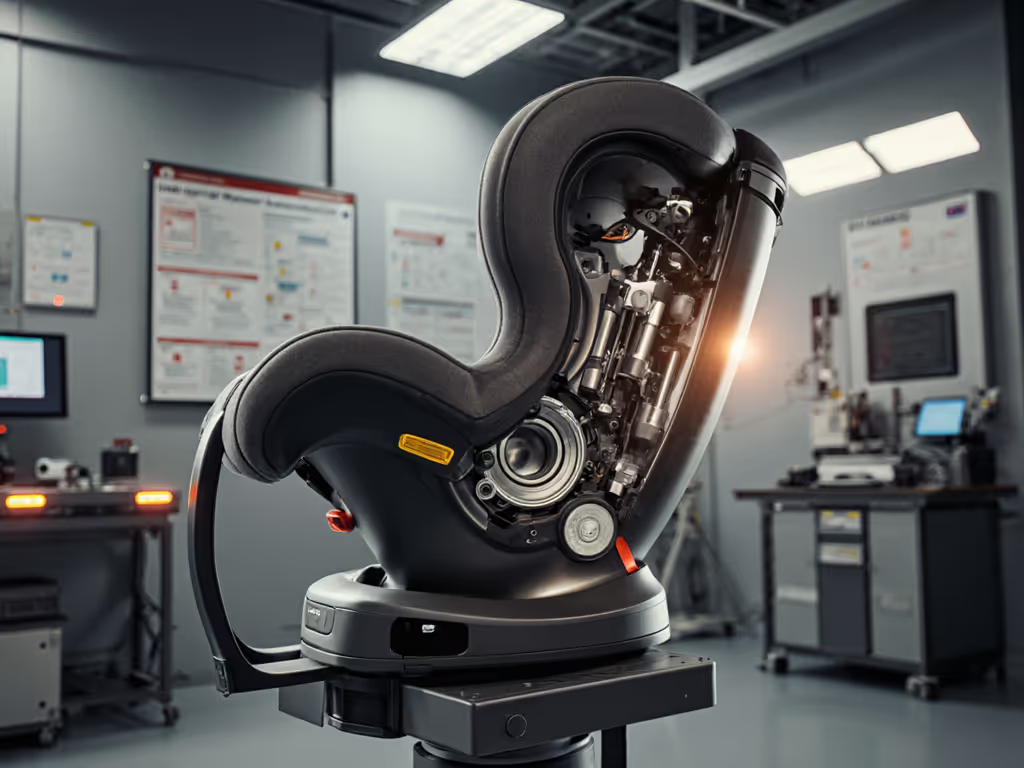
When properly engineered, car seat rotating mechanisms offer more than convenience (they represent a sophisticated interplay of physics, geometry, and safety engineering). And when you understand the 360-degree car seat engineering behind these systems, you can make smarter choices that align with how your child actually grows. I've spent years modeling growth trajectories to identify which seats truly deliver on the promise of longevity through thoughtful design rather than marketing hype.
The Physics of Rotation: More Than Just a Spin
The appeal of rotational base mechanics is obvious: getting a wiggly child into a rear-facing seat becomes dramatically easier when you can face the seat toward you. But this convenience comes with engineering trade-offs that few parents consider. For model-by-model comparisons of swivel designs and daily usability, see our rotating car seat guide.
Rotational seats work on a carefully calibrated bearing system that must balance two competing demands: smooth rotation during loading/unloading versus absolute rigidity during impact. During a collision, the entire rotational mechanism must lock into position within milliseconds. Independent testing shows that seats meeting FMVSS 213a side-impact standards typically undergo rotational stress tests at 2x the force of standard crash testing.
Longevity lives in harness height, shell depth, and honest geometry.
The key engineering principle is that rotational seats must demonstrate equivalent or superior structural integrity to non-rotating counterparts when properly installed. This requires precision-machined components that maintain tolerance specifications throughout the seat's 10-year lifespan, something visible in the way manufacturers address wear points. Considerations like material composition (60% plastic, 25% steel, 14% fabric ratios as seen in some models) directly impact how well these seats maintain their safety margins over time.
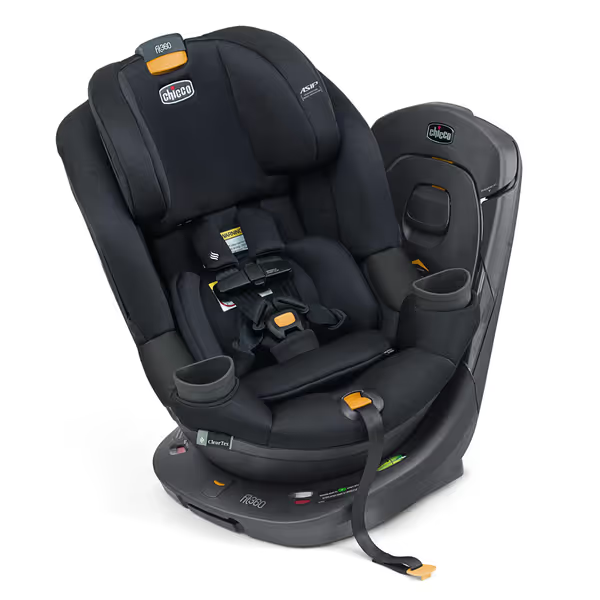
Chicco Fit360 ClearTex Rotating Convertible Car Seat
Safety vs. Convenience: The Unavoidable Trade-offs
Many parents don't realize that the rotational feature introduces potential misuse scenarios that could compromise safety. The most common issue is drivers rotating the seat to a non-locked position during travel, a serious risk that manufacturers address through multiple safety protocols.
Proper installation physics dictate that rotational seats require:
- Clear visual indicators (green/red bubble levels) confirming proper orientation
- Audible confirmation (a distinct "click" when locked)
- Physical blockers preventing operation while in motion
In my growth modeling work, I've tracked how these features hold up across thousands of loading cycles. Seats with simpler rotation mechanisms (those requiring only a single handle squeeze) tend to maintain reliability longer than those with complex dual-handle systems that wear unevenly. The best designs incorporate scenario matrices for multi-vehicle households that account for how often seats get moved between cars.
It's crucial to understand that rotational seats aren't universally appropriate. Vehicles with severely sloped rear seats or limited headroom can create pinch points that compromise the rotation mechanism. Always verify that your specific vehicle's geometry accommodates the seat's rotation radius before purchase (this is where test-fitting with your actual vehicle matters more than online specs).
Engineering Longevity Through Geometry
When I plotted my nephew's growth trajectory from infant to preschooler, one pattern became clear: seats that lasted longest shared specific geometric properties beyond just rotational convenience. True longevity comes from honest geometry (measurements that remain functional through growth stages rather than marketing timelines).
The most overlooked aspect of car seat rotating durability is how shell depth interacts with harness height progression. A seat might rotate smoothly for years, but if the shell depth doesn't accommodate a child's torso length when rear-facing, you'll face premature outgrowth. My percentile-aware charts consistently show that seats with shells measuring at least 18" deep (at the shoulder line) maintain rear-facing usability through the 85th percentile for height.
This is where many rotational seats fall short. While manufacturers highlight maximum weight limits, the critical metric is usable harness height slots that align with growth curves. For example, a seat claiming "rear-facing to 50 lbs" might only provide usable slots up to 40 lbs before the child's shoulders outgrow the top harness position. The solution? Look for clear upgrade thresholds in your research, specific height measurements where transition becomes necessary based on actual shoulder position, not arbitrary weight numbers. For practical height checkpoints and best practices, explore our guide to maximizing rear-facing time.
When properly implemented, rotational seats can be part of a "buy once, use for years" strategy that spans multiple vehicles. The key is recognizing that rotation is a feature, not the foundation, of longevity. Seats engineered with supportive recline mechanisms that don't compromise rotation stability tend to deliver the longest service life across carpools and family vehicle changes.
Implementation Best Practices for Safety-Conscious Parents
To maximize both safety and convenience with rotational seats, adopt these evidence-based practices:
- Verify rotation lock with every use: Apply gentle pressure to ensure the seat doesn't rotate when locked
- Check bearing alignment quarterly: Uneven wear can develop if seats aren't properly leveled during installation
- Monitor shell integrity: Deep cracks or flexing near rotation points indicate compromised structural integrity
- Maintain proper recline: Overly upright positions strain rotational components during loading
The most reliable installations I've observed leverage the car seat's built-in leveling system in conjunction with vehicle-specific considerations. Use our vehicle-tuned installation guide for step-by-step leveling, lock checks, and common mistake avoidance. For instance, SUVs with higher seat bases often require different recline settings than sedans to maintain proper rotation clearance.
When researching rotational seats, prioritize manufacturers who publish detailed engineering specifications about their rotation mechanisms rather than just marketing claims. Look for information about:
- Rotation cycle testing (how many open/close cycles before wear becomes noticeable)
- Bearing composition (stainless steel vs. polymer components)
- Impact lock response time (how quickly the mechanism locks during collision forces)
These metrics matter more than flashy features when considering long-term reliability. The best rotational seats integrate these engineering considerations with thoughtful growth progression, delivering on the promise of convenience without compromising safety margins.
The Long View on Rotation Technology
Rotational seats exemplify how thoughtful engineering can solve real parent pain points, but only when the underlying geometry supports actual child growth patterns. The seats that serve families longest aren't necessarily the flashiest models, but those with honest measurements that align with percentile growth curves.
As vehicles and safety standards evolve, so too will rotational mechanics. But the fundamental principle remains: true longevity is engineered through geometry. When you prioritize seats with thoughtful harness height progression, adequate shell depth, and physics-based rotation systems, you invest in safety that grows with your child, not just a temporary convenience.
For parents seeking to make evidence-based choices, I recommend exploring NHTSA's updated side-impact testing protocols alongside manufacturer-specific engineering data. We also compare frontal vs side crash performance to help interpret those metrics in real-world terms. Understanding these metrics puts you in control of your seating decisions, ensuring you can confidently buy once, use for years without compromising on safety or comfort.

